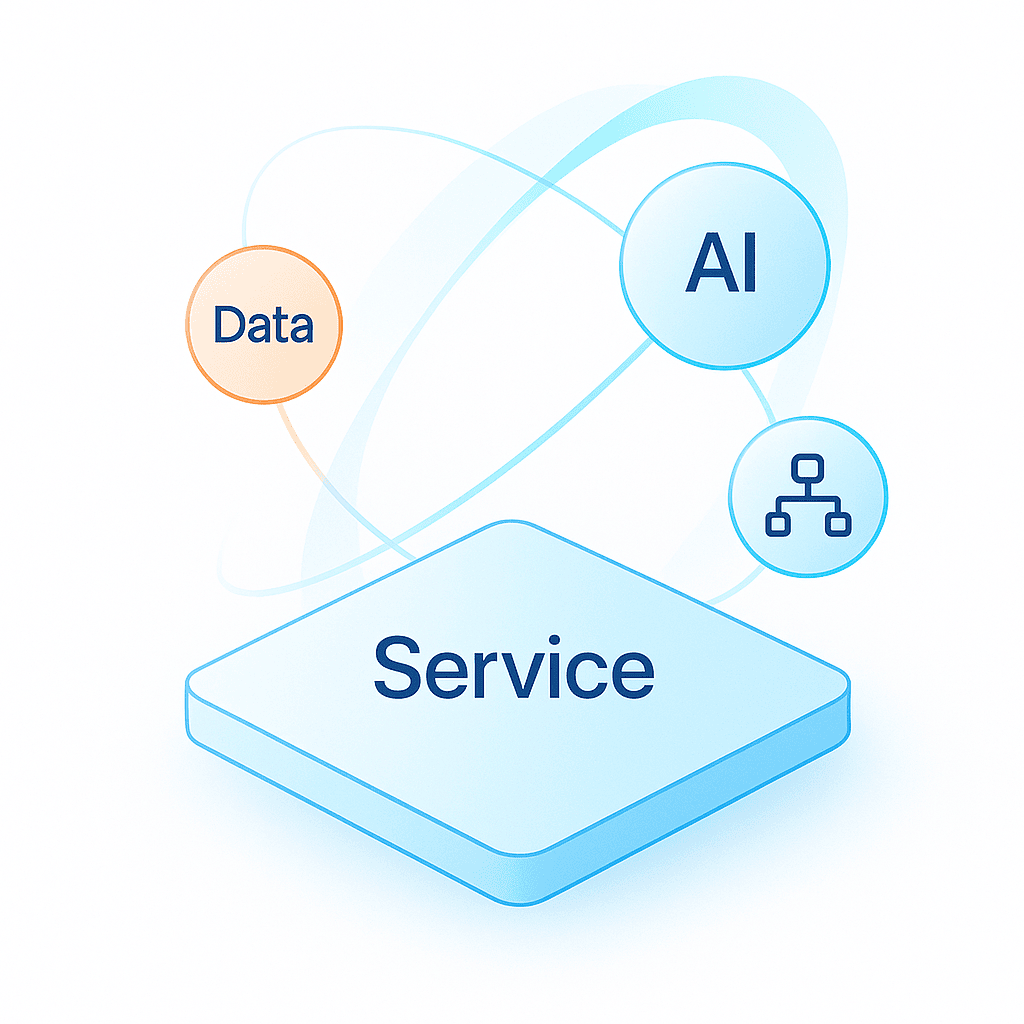
For years, businesses accumulated digital tools — CRM, ERP, BI solutions, BI solutions, marketing platforms, databases, AI, automation... Each met a specific need, but over time, this stacking logic created invisible complexity: fragmented data, fragmented workflows, and decisions disconnected from reality on the ground. Today, a new approach is needed: The Service-as-a-Platform (SaaP) model.
It is no longer a technological trend, but a strategic response to a fundamental problem: how to reconnect data, decision and business value in a coherent environment?
Businesses don't need more software. They need a ecosystem that circulates value between the existing bricks. The SaaP model is based on a simple idea: rather than stacking tools, we design a platform for interconnected services. Each service (analysis, AI, automation, automation, visualization, reporting, etc.) becomes a function of a coherent whole, not a standalone silo. This approach is directly inspired by the maturity achieved in cloud and data infrastructures: where once IT managed isolated tools, it now manages integrated environments. SaaP applies this same logic at the business level.
This transformation meets several concrete needs:
In other words, the Service-as-a-Platform model is more than just technological innovation. It is a reorganizing the way businesses think about data and services.
SaaP is not an engineering concept. It is a impact-oriented model. It puts business value back at the center of the discussion. Each service integrated into the platform has a reason for being: to reduce a cost, to accelerate a decision, to make data reliable, to enrich an analysis. Technology is no longer a goal; it is becoming a Means of amplification. This approach is also changing the nature of collaboration between businesses and tech. Teams no longer ask themselves “what tool should I choose?” , but “how does this brick contribute to our overall performance system?” It's a profound culture change, where IT is becoming a value orchestrator, not just a solution provider.
Businesses that adopt this logic are discovering a new form of agility. Because their systems are interconnected, they can experiment faster, adjust more easily, and learn continuously. They are developing a Augmented collective intelligence : data flows, analyses enrich each other, and decision-making becomes more relevant. Above all, this model promotes healthier data governance: rather than multiplying isolated projects, teams build a common base, capable of evolving with the needs of the company. It is this systemic coherence that distinguishes successful organizations from those that suffer from complexity.
Moving to a Service-as-a-Platform model does not happen without internal transformation. The main challenges are cultural and organizational:
These challenges explain why the most mature companies prefer a gradual approach: start with a business scope, demonstrate value, then expand.
This model is not a technical diagram. It is a vision of modern performance, where the boundaries between service, product and platform are erased. In a world where decisions need to be fast, contextualized, and collaborative, Service-as-a-Platform offers a framework where every brick counts — but where none works alone. It embodies a new form of digital maturity: one that places data, AI and businesses in a permanent dialogue.
Service-as-a-Platform is much more than an architecture model: it is a way of thinking about business in the age of intelligent systems. It is no longer about having the “best tools”, but the best way to get them to work together. Organizations that adopt it transform their data into decisions, their services into growth drivers, and their platforms into real strategic partners. In this logic, performance no longer comes from technology alone, but from the intelligent orchestration of the whole.